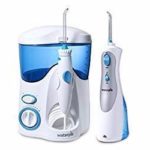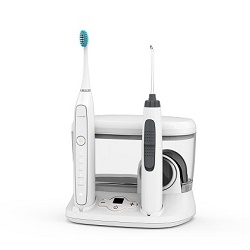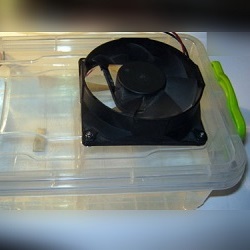Selection of irrigators for oral treatment
Oral irrigator is a device with which you can easily clean the space between the teeth.The device works on the principle of pulsating water pressure, which massages the gums, thereby activating blood circulation in them.
Thanks to the special nozzles that go in a set with the device, it is possible to reach the most inaccessible places, which seems impossible when using a dental floss or a brush. It is convenient to use it as a means for the care of crowns and dentures, and due to the possibility of adjusting the water pressure, it can be used by both children and adults.
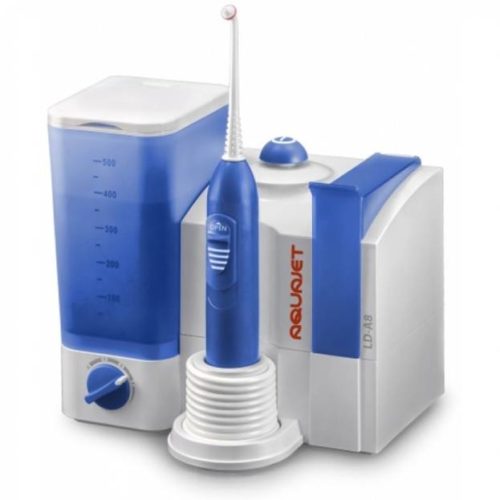
Content
When should I use it?
Oral irrigator is used in the following situations:
- for cleaning hard-to-reach places;
- when bleeding gums;
- for effective and thorough cleaning of braces;
- when caring for dentures and implants;
- for the prevention of caries and dental diseases;
- as an additional measure for accelerated gum healing;
- to enhance local immunity;
- to remove bad breath;
- when a person smokes a lot, since the systematic use of the device reduces the likelihood of gum disease.
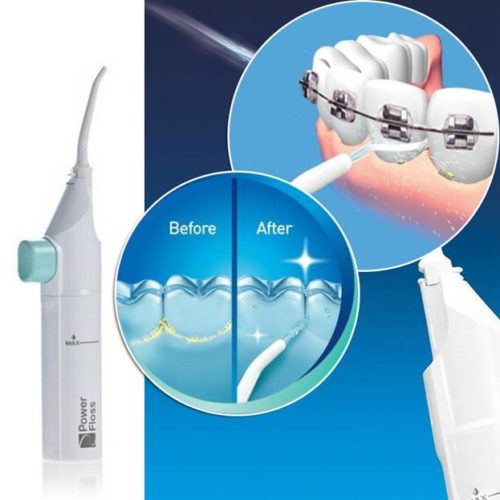
How to choose a irrigator
In order for the irrigator for the teeth and oral cavity to be ideally matched to specific goals and needs, it is necessary to pay attention to some points when choosing it. Special attention must be paid. on his method of cleaning.
Devices have several cleaning technologies:
- Microbubbles. The most modern technology, is gaining increasing popularity. Its essence lies in the fact that air bubbles affect the oral cavity along with a stream of fluid. Due to the increased content of microbubbles, the effect of micro-hydraulic jolts is created, thanks to which the plaque and food particles are removed much more efficiently.
- Monostruya. The classic technology that is used in most devices.It is considered the least effective.
- Pulsating jet. Subtle, fast pulsations qualitatively remove plaque and food particles.
Remember that insufficient oral hygiene can lead to unpleasant diseases, loss of teeth and even heart problems.
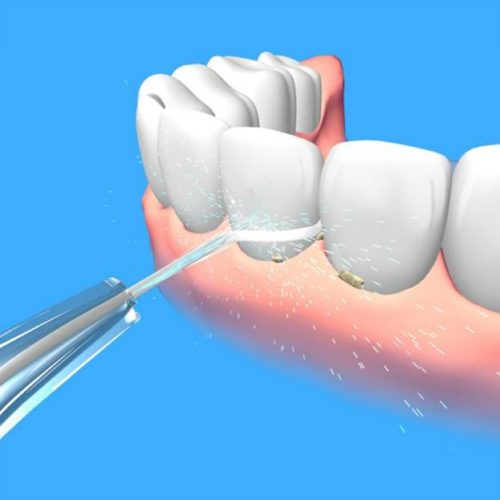
In addition, any oral irrigator is divided into mobile and stationary types:
Mobile (portable). This unit is very convenient, because it does not take up much space in your travel bag, if you often are out of the house and value oral hygiene. This irrigator has a small weight and small size. Despite the fact that the power of such a device is much lower than that of a stationary one, it is quite enough for high-quality cleaning of the mouth. In addition, there are several additional tips that allow the whole family to use it on any trip.
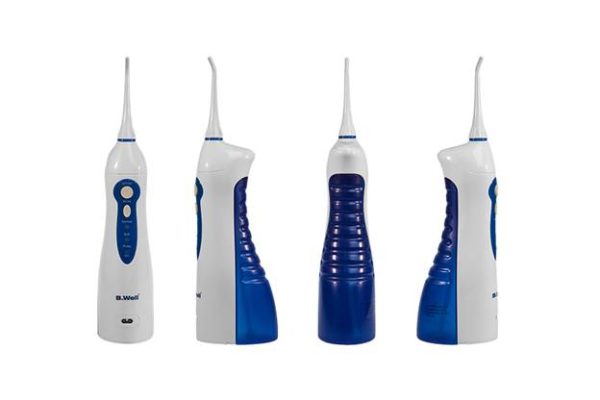
Stationary. Such a device is the most convenient at a constant location in the bathroom. Naturally, there should be a socket. This is a classic type of irrigators, which is more powerful and larger in size. It also has a large water tank. The device is convenient for use by the whole family, but inconvenient during transportation.
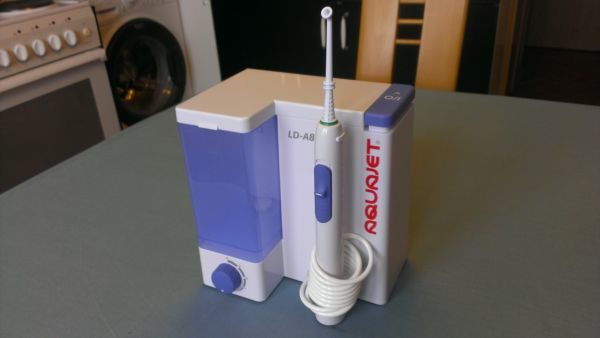
Instructions for use
In fact, this dental device is quite simple to use:
- It is necessary to start irrigation only after the classical cleaning has been carried out with an ordinary brush. In this case, occurs:
- The highest quality and complete cleaning.
- Remnants of toothpaste and food are easily removed.
- Despite the fact that many use ordinary warm water as a liquid for the device, you can use different solutions.
- The unit is enough to use 1 time per day.
- During irrigation it is necessary to keep the apparatus in such a way that the jet is at an angle of 60 to 90 degrees.
- The duration of one procedure should not exceed 15 minutes.
- The tip of the nozzle should be clasped with lips so that the liquid that treats the oral cavity, had the opportunity to free exit. To do this, you need to lean over the sink and turn on the device.
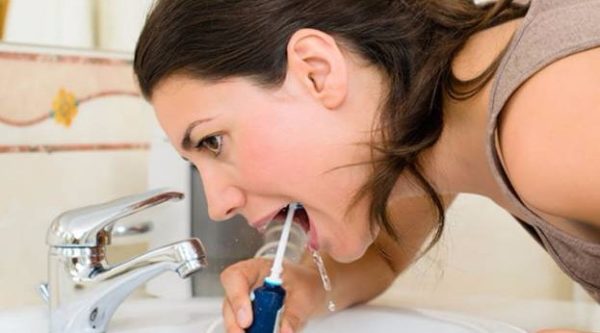
When is use not recommended?
In principle, there are no absolute contraindications to cleaning. There are some nuances in use if a person has undergone surgery in the oral cavity. In addition, it is not recommended to use an irrigator in the following cases:
- During exacerbation of chronic diseases of the oral cavity. The danger is that the disease may increase.
- In the case when 10-15 days after applying the device, your gums continue or bleed.
- As for children, they can be trusted with the use of an irrigator only if they can do their own cleaning and oral hygiene. But in this case it is also necessary to look after the process, since water under pressure can penetrate into the respiratory organs.
- The first acquaintance with the unit must be carried out with a small jet pressure. After the gums get used to this pressure, you can gradually increase the power of its supply.
In each case, you should contact a specialist for advice..
In order to fully understand what an irrigator is, it is necessary to carefully study its description and instructions for use, which must be included with the device. At the moment, the market has a large number of different models from famous and popular manufacturers. It remains only to choose the option you want and to sparkle a white-toothed smile!

/rating_off.png)






